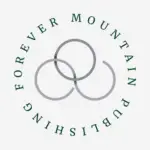Sally Port is coming, dear reader. Part of our gearing up process is making sure that the folks behind the magazine are familiar with all the steps of production in the magazine. For myself, that means learning more about page design software. It’s something I need to know, but how do I do that?
Often, the best way to learn is by doing. So, that’s what I did. And today I’m happy to tell you about my adventures in writing Bread and Bullets, a supplement for the Twilight 2000 (TW2K) 4th edition game.
For those who don’t know, TW2K is an alternate timeline roleplaying game dealing with world war 3, the one that might have happened back in the 1990’s. I’ve played off and on since the first edition came out and have some definite ideas about how the base rules of the 4th edition can be improved.
My first step (one I recommend for everyone) was making sure I was familiar with the rules and expectations of what I was working with. Then, the research began.
I researched the content I wanted to write about. But, just as important, if not more so, I researched the other TW2K products being offered at DrivethruRPG (the official outlet where fan based TW2K products are sold).
After my research, I started writing. But… I didn’t start writing Bread and Bullets just yet. Nope, first I wrote a book plan, my case for what I was going to write. That helped me map out the rest of the process. Then, I wrote the text portion of Bread and Bullets.
The writing part was simple. I’ve been doing that part for years. For me, it was the steps after that which got challenging.
I needed art, both for the cover and inside. That meant finding or creating pictures. Lucky for me I have artist friends…
There was (Que the ominous music…) page design to be done. Yes… Hypothetically you can do page design in Microsoft Word, but it’s not great at it. And MS Publisher ain’t really the best option either (Sorry Microsoft, it isn’t). Adobe Indesign is the top dog in this area. There’s also Scribus. It’s free to use, but costs you in time and effort to learn the program. Both are much better.
I’m a writer and editor, not a page designer. But as the editor-in-chief of a magazine and running a publishing company, it’s probably a good idea for me to know enough to talk intelligently with my page design folks. That meant reading documentation (gasp! Reading the manual!!!), watching some videos and actually trying things in the program.
I learned a lot and got a decent product. But then came submitting it for publication with Free League (the IP owners) and DriveThru. Just like our FMP/Sally Port Magazine submission processes, there are reasons for every step. And just like our processes, not following directions can lead to problems. Sometimes you even need to communicate with someone on the other side of the process to get things running smoothly. My best advice: read and follow instructions, reaching out when needed.
It works. And here’s the product page to prove it!
Learning is key to success, dear reader. Often, that means exposing our weaknesses. It also means being willing to be wrong. (if you’re not willing to be wrong, you won’t take the steps needed to be right…). It ain’t easy, but it’s what we have to do.
Do your learning. Find your success. And, I’ll see you next post.
Patrick Kidder
Patrick Kidder is the editor-in-chief for Forever Mountain Publishing and currently serves as the marketing and sales manager for the Latter-day Saints in Publishing Media and the Arts annual conference. In addition to writing and publishing, he has a master’s degree in psychology and is an eternal student with diverse interests. He’s authored three books, scientific articles, and a range of instructional and short fiction works. His fourth book is expected in 2025. He served a mission amongst the people of Georgia, US.

Pingback: New lessons from an old hanger… – Words Mean Stuff